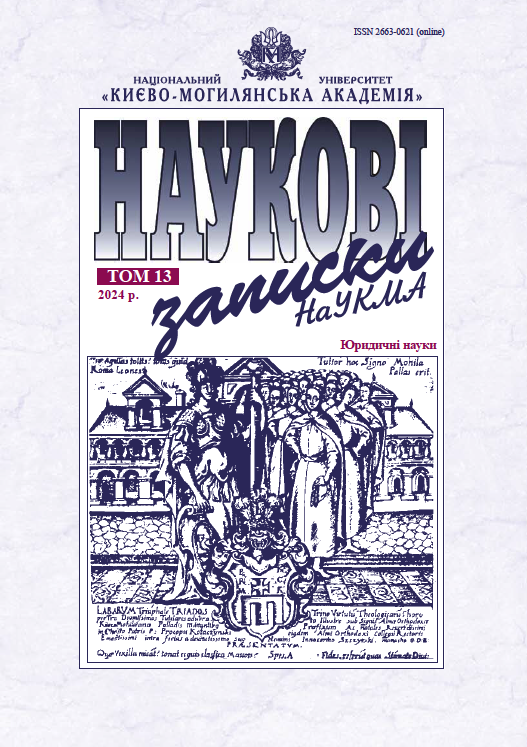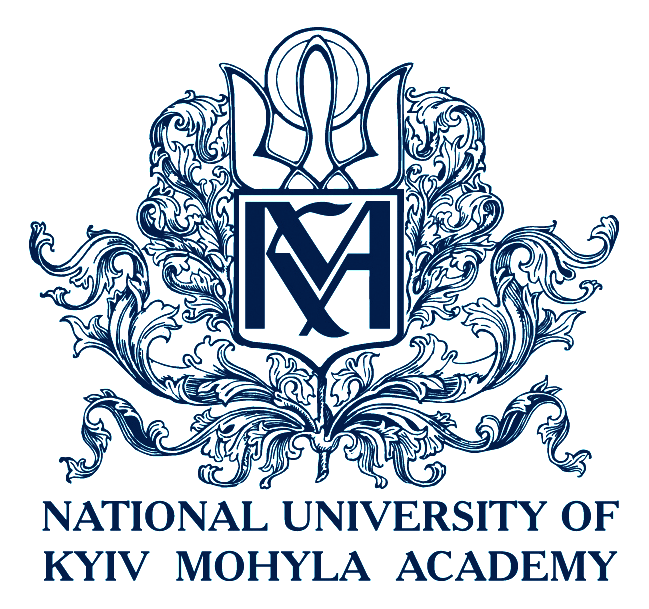Визначення національних та етнічних груп у Конвенції про запобігання злочину геноциду та покарання за нього крізь призму радянських і російських наративів про українську ідентичність
DOI:
https://doi.org/10.18523/2617-2607.2024.13.15-25Ключові слова:
міжнародне кримінальне право, геноцид, захищені групи, національні групи, етнічні групиАнотація
Дискусії про геноцидний характер російських діянь в Україні допомогли виявити багато сірих зон і прогалин у правових елементах злочину геноциду. Однак сучасний правовий аналіз сконцентрований здебільшого на сутності та особливостях ключового елементу злочину, тобто на умислі (намірі) знищити групу повністю або частково. Питання ж визначення та осмислення ймовірного об’єкта знищення, тобто самих захищених груп, залишається значною мірою не дослідженим. Навіть поза українським контекстом ця проблема є типовою для сучасної доктрини та судової практики в міжнародному кримінальному праві, які надають доволі поверховий чи навіть суперечливий аналіз концепцій захищених груп без ретельного вивчення здобутків інших наук, що зосереджуються на людських ідентичностях, як-от антропологія. Метою цієї статті є усунути такі прогалини, дослідивши дихотомію між національними та етнічними групами в Конвенції про запобігання злочину геноциду та покарання за нього крізь призму радянських і російських наративів стосовно української ідентичності.
У статті узагальнено стан сучасної міжнародно-правової доктрини та судової практики щодо визначення захищених груп, а також пов’язані з ними прогалини та неузгодженості. Крім того, у ситуаціях, де право нездатне дати характеристику захищеним групам, розглянуто складні питання визначення та розмежування груп крізь призму сучасної антропології. У статті наголошено на важливості мультидисциплінарного та контекстуалізованого застосування правових концепцій щодо злочину геноциду, беручи до уваги значення, які їм надають інші галузі науки, зосереджені на груповій ідентичності та міжгруповій динаміці. Аналіз показує відмінність сутності націй та етнічних груп. Нації визначено як складні спільноти, що характеризуються не лише культурними зв’язками (як етнічні групи), а й суб’єктивним глибшим самоусвідомленням членів нації як частини єдиної спільноти і національного проєкту. Врешті, автор застосовує наукові результати до контексту радянських і російських наративів про українську ідентичність, які демонструють дихотомію між національними та етнічними групами. За результатами дослідження автор пояснює, чому розуміння логіки та політики винищення, якими керувався радянський режим і які використовує Російська Федерація сьогодні, можливе лише крізь призму національної і псевдонаціональної ідентичності, у якій етнічна належність могла відігравати лише другорядну роль.
Посилання
- Abtahi, Hirad, and Philippa Webb. The Genocide Convention: the travaux préparatoires. Leiden: Martinus Nijhoff Publishers, 2008.
- Antonovych, Myroslava. “The Holodomor-Genocide and the Ongoing Russian Genocide in Ukraine: Intent, Victims and Perpetrators.” Saar Expert Papers (2023). https://jean-monnetsaar.eu/wp-content/uploads/2023/02/Genocide_Ukraine.pdf.
- Apt, Clara. “Russia’s Eliminationist Rhetoric Against Ukraine: A Collection.” Just Security, January 11, 2024. https://www.justsecurity.org/81789/russias-eliminationist-rhetoric-againstukraine-a-collection/.
- Azarov, Denys, Dmytro Koval, Gaiane Nuridzhanian, and Volodymyr Venher. “Understanding Russia’s Actions in Ukraine as the Crime of Genocide.” Journal of International Criminal Justice 21, no. 2 (2023): 233–64. https://doi.org/10.1093/jicj/mqad018.
- Balachuk, Iryna. “Medvedev states Russia will never leave Ukraine be.” Ukrainska Pravda, January 17, 2024. https://www.pravda.com.ua/eng/news/2024/01/17/7437637/.
- Breuilly, John. Nationalism and the State. Manchester, UK: Manchester University Press, 1982.
- Castells, Manuel. The Power of Identity. 2nd ed. Hoboken, NJ: Wiley-Blackwell, 2010.
- Deutsch, Karl W. International Political Communities: An Anthology. Doubleday Garden City, 1966.
- Eley, Geoff, and Ronald Grigor Suny, eds. Becoming National: A Reader. New York: Oxford University Press, 1996.
- Garner, Renaud-Philippe. “Nationalism.” Oxford Research Encyclopedia of Politics (2022, May 18). https://doi.org/10.1093/acrefore/9780190228637.013.2039.
- Gellner, Ernest. Nations and Nationalism. Oxford, UK, and Cambridge, USA: Blackwell, 1983.
- Harari, Yuval Noah. “Why Vladimir Putin has already lost this war.” The Guardian, February 28, 2022. https://www.theguardian.com/commentisfree/2022/feb/28/vladimir-putin-war-russiaukraine?utm_source=dlvr.it&utm_medium=%5Btwitter%5D&utm_campaign=%5Brogue_corq%5D.
- Hunczak, Taras, ed. The Ukraine, 1917-1921: A Study in Revolution. Harvard Ukrainian Research Institute, 1978. https://diasporiana.org.ua/wp-content/uploads/books/22264/file.pdf.
- Ioffe, Yuliia. “Forcibly Transferring Ukrainian Children to the Russian Federation: A Genocide?” Journal of Genocide Research 25, no. 3–4 (2023): 315–51. https://doi.org/10.1080/14623528.2023.2228085.
- Izvestia. “Putin pointed to the inevitable spiritual reunification of Russia and Ukraine.” Izvestia, March 6, 2024. https://iz.ru/1661359/2024-03-06/putin-nazval-neizbezhnymdukhovnoe-vossoedinenie-rossii-i-ukrainy.
- Jennings, Robert, and Arthur Watts. Oppenheim’s International Law. Volume 1: Peace. 9th ed. Oxford University Press, 2008.
- Jordash, Wayne. “Genocide in Ukraine.” Ukrainska Pravda, March 28, 2023. https://www.pravda.com.ua/columns/2023/03/28/7395377/.
- Keating, Michael. Nations against the State: The New Politics of Nationalism in Quebec, Catalonia, and Scotland. New York: St. Martin’s Press, 1995.
- Kreß, Claus. “The Crime of Genocide under International Law.” International Criminal Law Review 6 (2006): 461–502.
- Kulyk, Volodymyr. “National Identity in Time of War: Ukraine after the Russian Aggressions of 2014 and 2022.” Problems of Post-Communism (2023): 1–13. https://doi.org/10.1080/10758216.2023.2224571.
- Lemberg, Eugen. Nationalismus. Bd. 1: Psychologie und Geschichte. Rowohlt Reinbek, 1964.
- Liber, George. “Korenizatsiia: Restructuring Soviet nationality policy in the 1920s.” Ethnic and Racial Studies 14, no. 1 (1991): 15–23.
- Lingaas, Carola. “Imagined Identities: Defining the Racial Group in the Crime of Genocide.” Genocide Studies and Prevention 10, no. 1 (2016): 79–106. http://dx.doi.org/10.5038/1911-9933.10.1.1377.
- Lingaas, Carola. “Conceptualizing the National Group for the Crime of Genocide: Is Law Able to Account for Identity Fault Lines?” Nationalities Papers 49, no. 2 (2021): 240–61. https://doi.org/10.1017/nps.2020.5.
- Lingaas, Carola. “Religious Group Identities in Genocide: Social Identity Theory as a Tool for Disentangling Law and Religion.” Nordic Journal of Human Rights 39, no. 4 (2021): 440–57. https://doi.org/10.1080/18918131.2021.2015148.
- Lisson, David. “Defining “National Group” in the Genocide Convention: A Case Study of Timor-Leste.” Stanford Law Review 60, no. 5 (2008): 1459–96.
- Marchuk, Iryna, and Aloka Wanigasuriya. “Beyond the False Claim of Genocide: Preliminary Reflections on Ukraine’s Prospects in Its Pursuit of Justice at the ICJ.” Journal of Genocide Research 25, no. 3–4 (2022): 256–78. https://doi.org/10.1080/14623528.2022.2143528.
- Mettraux, Guenael. International Crimes: Law and Practice. Volume I: Genocide. Oxford University Press, 2019.
- New Lines Institute for Strategy and Policy and Raoul Wallenberg Centre for Human Rights. An Independent Legal Analysis of the Russian Federations’ Breaches of the Genocide Convention in Ukraine and the Duty to Prevent (May 2022). https://newlinesinstitute.org/wp-content/uploads/An-Independent-Legal-Analysis-of-the-Russian-Federations-Breaches-of-the-Genocide-Convention-in-Ukraine-and-the-Duty-to-Prevent-1-2.pdf.
- Platonova, Anastasia, and Svyatoslav Khomenko. “A Ukrainian woman found a photo of herself with children wearing embroidered shirts on a billboard in support of the annexation of Kherson.” BBC, August 26, 2022. https://www.bbc.com/russian/features-62687256.
- President of Russia. “Article by Vladimir Putin “On the Historical Unity of Russians and Ukrainians”.” President of Russia, July 12, 2021. http://en.kremlin.ru/events/president/news/66181.
- President of Russia. “Address by the President of the Russian Federation.”
- President of Russia, February 21, 2022. http://en.kremlin.ru/events/president/news/67828.
- President of Russia. “Meeting with permanent members of the Security Council”.
- President of Russia, March 3, 2022. http://kremlin.ru/events/president/news/67903.
- President of Russia. “Vladimir Putin answered questions from journalists.”
- President of Russia, October 14, 2022. http://kremlin.ru/events/president/news/69604.
- Prosecutor v. Goran Jelisić (Trial Judgement), IT-95-10-T, 14 December 1999. https://www.refworld.org/jurisprudence/caselaw/icty/1999/en/33140.
- Prosecutor v. Jean-Paul Akayesu (Trial Judgement), ICTR-96-4-T, 2 September 1998. https://www.refworld.org/cases,ICTR,40278fbb4.html.
- Prosecutor v. Jević (Verdict), X-KR-09/823-1, 22 August 2012. https://www.legal-tools.org/doc/288d85/pdf/.
- Prosecutor v. Radislav Krstić (Trial Judgment), IT-98-33-T, 2 August 2001. https://www.icty.org/x/cases/krstic/tjug/en/krstj010802e.pdf.
- Radio Free Europe/Radio Liberty. “Historian Timothy Snyder: ‘History Is Always Plural.” Radio Free Europe/Radio Liberty, June 20, 2015. https://www.rferl.org/a/russia-ukraine-interviewbloodlands-timothy-snyder-history/27082683.html.
- Raphael Lemkin. Soviet Genocide in Ukraine (article in 33 languages), edited by Roman Serbyn; compiled by Olesia Stasiuk. Kyiv: Marko Melnyk Publishing House, 2020. https://holodomormuseum.org.ua/wp-content/uploads/2022/12/Lemkin.pdf.
- RBK Ukraine. “Traitor Povaliy sang a Ukrainian folk song to the day of “Military Glory of the Russian Federation”.” RBK Ukraine, September 20, 2023. https://www.rbc.ua/rus/styler/zradnitsyapovaliy-zaspivala-ukrayinsku-narodnu-1695222469.html.
- Reuters. “Extracts from Putin’s speech on Ukraine.” Reuters, February 21, 2022. https://www.reuters.com/world/europe/extracts-putins-speech-ukraine-2022-02-21/.
- Ruhashyankiko, Nicodème, UN Economic and Social Council. Study of the question of the prevention and punishment of the crime of genocide, UN Doc. No. E/CN.4/Sub.2/416 (4 July 1978). https://digitallibrary.un.org/record/663583?v=pdf.
- Schabas, William A. “Groups Protected by The Genocide Convention: Conflicting Interpretations from The International Criminal Tribunal For Rwanda.” ILSA Journal of International & Comparative Law 6 (2000): 375–87.
- Schabas, William A. Genocide in International Law. The Crime of Crimes. 2nd ed. Cambridge University Press, 2009.
- Singer, Brian C. J. “Cultural versus Contractual Nations: Rethinking Their Opposition.” History and Theory 35, no. 3 (1996): 309–337.
- Snyder, Timothy. “The War in Ukraine Has Unleashed a New Word.” The New York Times Magazine, April 22, 2022. https://www.nytimes.com/2022/04/22/magazine/ruscism-ukrainerussia-war.html.
- Snyder, Timothy. “Ukraine Holds the Future”. Foreign Affairs, September 6, 2022. https://www.foreignaffairs.com/ukraine/ukraine-wardemocracy-nihilism-timothy-snyder.
- Tams, Christian J., Lars Berster, and Björn Schiffbauer. Convention on the Prevention and Punishment of the Crime of Genocide: A Commentary. C.H. Beck, 2014.
- The Village Ukraine. “How Ukraine was made Soviet (and how Ukrainians resisted). The history of a nation that has not lost its identity in the “family of nations.” The Village Ukraine, February 7, 2024. https://www.village.com.ua/village/knowledge/podcast/347523-ukrainian-history-street-2023-s02e15.
- Thiam, Demba. Fourth report on the draft Code of Offences against the Peace and Security of Mankind, UN Doc. A/CN.4/398, 11 March 1986. https://digitallibrary.un.org/record/117074.
- UN Economic and Social Council, Ad Hoc Committee on Genocide. Commentary on Articles Adopted by the Committee, UN Doc. No. E/AC.25/W.1 (26 April 1948).
- UN General Assembly, 20th session, 3rd Committee. Official Records of the 1304th Meeting, UN Doc. A/C.3/SR.1304 (14 October 1965). https://digitallibrary.un.org/record/806678?v=pdf.
- UN General Assembly. Convention on the Prevention and Punishment of the Crime of Genocide, UN Treaty Series 277, vol. 78 (9 December 1948).
- UN Security Council. The Record of the 9069th Meeting (21 June 2022), UN Doc. No. S/PV.9069. https://undocs.org/en/S/PV.9069.
- Von Bogdandy, Armin, and Stefan Häuβler. “Nations.” Max Planck Encyclopedia of Public International Law. 2019.
- Woodwell, Douglas. Nationalism in International Relations: Norms, Foreign Policy, and Enmity. Palgrave Macmillan, 2007. (Advances in Foreign Policy Analysis).
- Yefimenko, Hennadii. “Korenization, Ukrainization, Nationalism.” Suchasnist 11 (2008): 46–52.
##submission.downloads##
Опубліковано
Як цитувати
Номер
Розділ
Ліцензія
Авторське право (c) 2024 Maksym Vishchyk

Ця робота ліцензується відповідно до Creative Commons Attribution 4.0 International License.
Автори зберігають за собою авторські права на твір на умовах ліцензії Creative Commons Attribution 4.0 International License, котра дозволяє іншим особам вільно поширювати опублікований твір з обов’язковим посиланням на його авторів та його першу публікацію в цьому журналі.
Автори мають право укладати самостійні додаткові угоди щодо неексклюзивного поширення твору в тому вигляді, в якому його було опубліковано в журналі (наприклад, розміщувати роботу в електронному репозитарії установи або публікувати у складі монографії), за умови збереження посилання на його першу публікацію.
Політика журналу дозволяє розміщення авторами в мережі Інтернет (наприклад, у репозитаріях установ або на особистих веб-сайтах) рукопису роботи, як до подання його до редакції, так і під час його редакційного опрацювання, оскільки це сприяє виникненню продуктивної наукової дискусії та позитивно позначається на оперативності та динаміці цитування опублікованої роботи (див. The Effect of Open Access).



